BLOG
MARKET INTEL by PharmaCompass
CONTENT by Suppliers
- Interview #SpeakPharma
- Video #SupplierSpotlight
- Vlog #PharmaReel
- Company Bio #AboutSupplier
- Service Bio #AboutCapabilities
News
Create content with us, ask us


- TECH TRANSFER
- OVERVIEW
- INJECTABLE / PARENTERAL
- LYOPHILIZATION
- CLINICAL SUPPLY
- TABLET
- CAPSULE
- POWDER / BLEND
- CONTROLLED / IMMEDIATE / MODIFIED RELEASE
- GRANULE / PELLETS
- OPHTHALMIC
- LIPOSOME / MICROSPHERE / NANOPARTICLE
- OTIC
- CREAM / GEL / LOTION / OINTMENT
- INHALATION / NASAL
- PATCH
- BUCCAL / ORODISPERSIBLE
- CHEWABLE / SUCKABLE
- LIQUID FORMULATION
- EMULSION
- SUSPENSION
- VAGINAL / RECTAL
- SCALE-UP CAPABILITIES
- LIPID FORMULATION
- STERILE LIQUID FORMULATION
- PEDIATRIC FORMULATION
- DRY / WET GRANULATION
- PROCESS DEVELOPMENT & OPTIMIZATION
- SUPPOSITORY
- CONTROLLED SUBSTANCE
- SOFTGEL CAPSULE
- SPRAY DRYING
- LOW TEMPERATURE / CRYOGENIC CONDITION (-78 °C)
- SMALL SCALE BATCH
- STEROID / HORMONE
- PROCESS VALIDATION STUDIES
- TOPICAL
- COMPOUNDING
- POWDER
- ANTIBODY DRUG CONJUGATE

01 Controlled / Immediate / Modified Release
02 Controlled / Immediate / Modified Release
03 Controlled / Immediate / Modified Release
04 Controlled / Immediate / Modified Release
05 Controlled / Immediate / Modified Release
06 Controlled / Immediate / Modified Release
07 Controlled / Immediate / Modified Release
08 Controlled / Immediate / Modified Release
09 Controlled / Immediate / Modified Release
10 Controlled / Immediate / Modified Release
11 Controlled / Immediate / Modified Release

01 AUPA Biopharm
02 Adare Pharma Solutions
03 Adragos Pharma
04 Aenova Group
05 Aizant Drug Research Solutions Pvt. Ltd.
06 Aragen Life Sciences
07 Ascent Innovative Medicines
08 Athena Pharmaceutiques
09 Aurigene Pharmaceutical Services
10 Avaca Pharma
11 Axxelent Pharma Science
12 Biolink LifeSciences
13 Biophore India Pharmaceuticals Pvt Ltd
14 Bioplus Life Sciences
15 Cambrex Corporation
16 Catalent Pharma Solutions
17 Chanelle Medical
18 Custom Pharma Services
19 Cyndea Pharma S.L
20 Douglas CDMO
21 Ethypharm
22 Eurofins CDMO
23 GALENIX INNOVATIONS
24 Glatt Pharmaceutical Services
25 Halo Pharmaceutical
26 Mission | CDMO
27 Mithra CDMO
28 NanoAlvand
29 ORIT LABS LLC
30 One Pharma
31 PSR Pharma Science and Research
32 PharmaVize NV
33 Prague Scientific
34 Quotient Sciences
35 Recipharm AB
36 Ropack Inc
37 Sai Life Sciences Limited
38 Servier
39 Skyepharma
40 Societal CDMO
41 Sushen Medicamentos Pvt. Ltd
42 Tianjin Hankang Pharmaceutical Biotechnology
43 Torrent Pharmaceuticals Limited
44 UPM Pharmaceuticals
45 Blank

01 Belgium
02 China
03 Czech Republic
04 France
05 France
06 France
07 France
08 Germany
09 Germany
10 Greece
11 India
12 India
13 Iran
14 Ireland
15 New Zealand
16 New Zealand
17 Spain
18 Sweden
19 Taiwan
20 U.S.A
21 U.S.A
22 U.S.A
23 United Kingdom
24 United Kingdom
25 Blank
- Analytical > Analytical Method Development
- Analytical > Analytical Testing Services > Inhalation Products
- Analytical > BioAnalytical Services
- API & Drug Product Development > API Development
- API & Drug Product Development > API Development > Antibody Drug Conjugate
- API & Drug Product Development > API Development > Fine Chemical / Intermediate
- API & Drug Product Development > API Development > High Potency APIs (HPAPIs)
- API & Drug Product Development > API Development > Impurity / Reference Standard
- API & Drug Product Development > API Development > Oligonucleotide / Polynucleotide
- API & Drug Product Development > API Development > Oligosaccharides & Polysaccharides
- API & Drug Product Development > API Development > Overview
- API & Drug Product Development > API Development > Process Development & Optimization
- API & Drug Product Development > API Development > Protein / Peptide
- API & Drug Product Development > API Development > Separation & Purification
- API & Drug Product Development > API Development > Small Molecules
- API & Drug Product Development > API Development > Spray Drying
- API & Drug Product Development > Formulation Development
- API & Drug Product Development > Formulation Development > Buccal / Orodispersible
- API & Drug Product Development > Formulation Development > Capsule
- API & Drug Product Development > Formulation Development > Chewable / Suckable
- API & Drug Product Development > Formulation Development > Clinical Supply
- API & Drug Product Development > Formulation Development > Compounding
- API & Drug Product Development > Formulation Development > Controlled / Immediate / Modified Release
- API & Drug Product Development > Formulation Development > Controlled Substance
- API & Drug Product Development > Formulation Development > Granule / Pellets
- API & Drug Product Development > Formulation Development > Inhalation / Nasal
- API & Drug Product Development > Formulation Development > Injectable / Parenteral
- API & Drug Product Development > Formulation Development > Liquid Formulation
- API & Drug Product Development > Formulation Development > Lyophilization
- API & Drug Product Development > Formulation Development > Ophthalmic
- API & Drug Product Development > Formulation Development > Pediatric Formulation
- API & Drug Product Development > Formulation Development > Scale-Up Capabilities
- API & Drug Product Development > Formulation Development > Sterile Liquid Formulation
- API & Drug Product Development > Formulation Development > Suspension
- API & Drug Product Development > Formulation Development > Tablet
- API & Drug Product Development > Formulation Development > Topical
- API & Drug Product Development > Preformulation & Material Science > Particle Size Reduction & Micronization
- API & Drug Product Development > Preformulation & Material Science > Polymorph & Crystal Screening
- API & Drug Product Development > Preformulation & Material Science > Solubility Assessment & Enhancement
- API & Drug Product Development > Preformulation & Material Science > Taste Masking
- API Manufacturing > Antibiotic
- API Manufacturing > Antibody Drug Conjugate
- API Manufacturing > Biologics, Bioprocess & Fermentation
- API Manufacturing > Chiral Synthesis
- API Manufacturing > Clinical Supply
- API Manufacturing > Continuous Flow Process
- API Manufacturing > Contract Manufacturing
- API Manufacturing > Controlled Substance
- API Manufacturing > Custom Synthesis & Manufacturing
- API Manufacturing > Cytotoxic Compound
- API Manufacturing > Drying > Spray Drying
- API Manufacturing > Fine Chemical / Intermediate
- API Manufacturing > GMP Manufacturing
- API Manufacturing > Hazardous Chemistry
- API Manufacturing > High Potency APIs (HPAPIs)
- API Manufacturing > Micronization
- API Manufacturing > Oligonucleotide / Polynucleotide
- API Manufacturing > Oligosaccharides & Polysaccharides
- API Manufacturing > Organometallic Chemistry
- API Manufacturing > Organometallic Chemistry > Cyanation
- API Manufacturing > Organometallic Chemistry > Metal Hydride Reduction
- API Manufacturing > Ozonolysis
- API Manufacturing > Process Development & Optimization
- API Manufacturing > Protein / Peptide > Synthesis
- API Manufacturing > Reference Standard
- API Manufacturing > Scale Up
- API Manufacturing > Separation & Purification
- API Manufacturing > Small Molecules
- Clinical Trials > Compliance, Regulatory & Consulting
- Clinical Trials > Packaging & Logistics
- Clinical Trials > Medical Writing & Language Translation
- Clinical Trials > Patient / Investigator Recruitment
- Clinical Trials > Technology / Data / Analytics
- Drug Product Manufacturing > Biologic Drugs
- Drug Product Manufacturing > Capsule
- Drug Product Manufacturing > Capsule > Steroid / Hormone
- Drug Product Manufacturing > Compounding
- Drug Product Manufacturing > Cream / Lotion / Ointment
- Drug Product Manufacturing > Emulsion > Overview
- Drug Product Manufacturing > Gel > Overview
- Drug Product Manufacturing > Granule / Pellet
- Drug Product Manufacturing > Injectable / Parenteral
- Drug Product Manufacturing > Injectable / Parenteral > Overview
- Drug Product Manufacturing > Injectable / Parenteral > Pre-Filled Syringe
- Drug Product Manufacturing > Liquid
- Drug Product Manufacturing > Lyophilization
- Drug Product Manufacturing > Nasal
- Drug Product Manufacturing > Softgel Capsule
- Drug Product Manufacturing > Solution > Overview
- Drug Product Manufacturing > Spray
- Drug Product Manufacturing > Suppository
- Drug Product Manufacturing > Suspension > Overview
- Drug Product Manufacturing > Syrup
- Drug Product Manufacturing > Tablet
- Drug Product Manufacturing > Technologies
- Drug Product Manufacturing > Technologies > Orally Disintegrating Tablets (ODTs)
- Drug Product Manufacturing > Technologies > Taste Masking
- Packaging > Clinical Services
- Packaging > Contract Services
- Packaging > Contract Services > Serialization Compliance
- Packaging > Logistic Services
- Empty Capsules
- Empty Capsules > Clinical Supply
- Empty Capsules > HardGel
- Empty Capsules > Inhalation
- Emulsifying Agents
- Soft Gelatin
- Solubilizers
Overview of controlled release formulation development and manufacturing of complex modified dosage forms including modified release tablets
Q1. What is formulation development and why is it important?
Fully integrated CDMOs offer CDMO services including drug formulation, development, and delivery. Pharma CDMOs which work on formulation development studies determine the specialist dosage forms, composition, and development and manufacturing routes, fundamental to drug product formulation. Pharmaceutical formulation development and contract services at times pertain to capsules filled with tablets, powder, granules, pellets, etc. and cover several other drug formulations.
Essentially, formulation development and manufacturing are performed in order for drugs to be effectively delivered to patients. The importance of these specialized services is exemplified by industry analysts, who speak to the advancement of formulation development & manufacturing in drug delivery platforms and personalized medicines.
Q2. How are oral solid dosage forms such as capsules and tablets formulated?
Oral solid dosages such as tablets and capsules employ oral drug delivery mechanisms, while drugs that are not orally administered use parenteral drug delivery systems. Traditional development and manufacturing of solid oral dosage forms starts with preformulation studies testing the physiochemical characteristics of active pharmaceutical ingredients (API) and excipients in order to design the desired formulation with process optimization.
Following preformulation, drug-excipient compatibility tests and prototype stability studies are conducted. The oral solid dosage forms are then subjected to batch scale-up after which they are transferred to commercial manufacturing units. The end goal of the formulation development of oral solid dosage forms is to improve the bioavailability of drugs and to optimize drug delivery.
Q3. What are the different types of oral solid formulations on the basis of their timed release profiles (Instant Release/Sustained Release/Controlled or Modified Release)?
Drug products are often classified into typical or complex formulations, complex drugs include products with complex active ingredients, complex routes of drug delivery, or complex dosage forms such as CDMO controlled release formulations.
If we look at CDMO oral formulations and oral applications, focusing on classic and complex oral solid dosage forms (OSD), it encompasses suspensions, powders, granules, tablets, including press coated tablets and multi-layer tablets, and capsules amongst a variety of other controlled release formulations.
Oral controlled release drug delivery products are further differentiated on the basis of their timed release profiles into the following types:
Immediate Release
- An oral solid dosage with an instant release profile expels the active ingredient immediately after the drug product is swallowed and reaches the stomach.
Sustained Release
- In sustained release there is a controlled release drug delivery of the drug product at a predetermined rate by maintaining a constant drug level for specific periods of time.
Controlled Release
- Controlled release formulations are released into the body in specified amounts over a given period of time. The controlled-release drug delivery system is designed to release the active pharmaceutical ingredient gradually over the day.
Q4. What is the mechanism of action of controlled release drug delivery systems (DDS)?
Looking at CDMO controlled release formulations, we now assess the development of modified-release dosage forms with controlled release drug delivery systems; for example, CDMO modified release tablets. The development of modified-release formulations is achieved via controlled drug release methods, involving both delayed and extended release systems of oral administration. These delivery mechanisms alter the timing or rate of release of active ingredients to successfully modify the expulsion of poorly water-soluble drugs in the body.
CMO controlled release formulations employ controlled delivery expertise in drug product development and controlled-release drug-delivery technologies, in order to develop a controlled-release tablet which adjusts API intake by expelling the desired therapeutic agents to the right part of the gastrointestinal system at the right time, for long periods in the body.
Controlled release drug delivery systems offer numerous advantages over traditional methods, including tailoring of drug release rates, protection of fragile drugs, and increased patient comfort and compliance. Modified oral drug delivery technology further achieves bioavailability enhancement for oral solid dosage forms.
Q5. What are extended and delayed modified release oral dosage forms? What are their advantages and disadvantages?
A CDMO offering controlled release formulation development and manufacturing, often concentrates on customizable drug delivery platforms for controlled release profiles, which include controlled release or modified release formulations.
Companies can use their annex of technology transfer CDMO services to provide modified release formulations with timed-release profiles to solve technological challenges. CDMO modified release tablets and capsules improve the bioavailability of drugs by making them more soluble and hence easier to absorb in the body.
Controlled Release Formulations:
Extended: Extended complex modified-release of oral solid dosage forms allows a reduction in dosing frequency and are designed to release the medication in a controlled manner by using Controlled Release Technologies (CRT), at a predetermined rate, duration, and location in the body to achieve and maintain optimum therapeutic blood levels of the drug. This technology makes it possible to retain a drug in the stomach for an extended period of time.
Delayed: Whereas, development of modified-release dosage forms employing delayed release, expel the drug at a time other than promptly after administration and also creates a delayed release for specific site delivery. The delay may be time-based or based on the influence of environmental conditions such as GI, pH, enzyme, and pressure.
Advantages and disadvantages of modified, customizable oral drug release forms:
Advantages of modified, controlled release profiles include sustained blood levels, improved solubility, reduced dosing frequency, attenuation of adverse effects, and improved patient compliance. Disadvantages include increased costs, slower onset of action, and prolonged side effects.
All Suppliers
01
Pharma Service : API & Drug Product Development
Category : Formulation Development
Sub Category : Controlled / Immediate / Modified Release
Pharma Service : API & Drug Product Development
02
Pharma Service : API & Drug Product Development
CONTROLLED & IMMEDIATE RELEASE TABLETS
Category : Formulation Development
Sub Category : Controlled / Immediate / Modified Release
Pharma Service : API & Drug Product Development
03
Pharma Service : API & Drug Product Development
MODIFIED RELEASE TABLET MANUFACTURING
Category : Formulation Development
Sub Category : Controlled / Immediate / Modified Release
Pharma Service : API & Drug Product Development
04
Pharma Service : API & Drug Product Development
Category : Formulation Development
Sub Category : Controlled / Immediate / Modified Release
Pharma Service : API & Drug Product Development
05
Pharma Service : API & Drug Product Development
CDMO FOR MODIFIED RELEASE FORMULATIONS
Category : Formulation Development
Sub Category : Controlled / Immediate / Modified Release
Pharma Service : API & Drug Product Development
06
Pharma Service : API & Drug Product Development
CONTROLLED RELEASE FORMULATIONS
Category : Formulation Development
Sub Category : Controlled / Immediate / Modified Release
Pharma Service : API & Drug Product Development
07
Pharma Service : API & Drug Product Development
CONTROLLED RELEASE FORMULATIONS
Category : Formulation Development
Sub Category : Controlled / Immediate / Modified Release
Pharma Service : API & Drug Product Development
08
Pharma Service : API & Drug Product Development
CDMO FOR MODIFIED RELEASE FORMULATIONS
Category : Formulation Development
Sub Category : Controlled / Immediate / Modified Release
Pharma Service : API & Drug Product Development
09
Pharma Service : API & Drug Product Development
CONTROLLED RELEASE FORMULATIONS
Category : Formulation Development
Sub Category : Controlled / Immediate / Modified Release
Pharma Service : API & Drug Product Development
10
Pharma Service : API & Drug Product Development
CONTROLLED & MODIFIED RELEASE PRODUCTS
Category : Formulation Development
Sub Category : Controlled / Immediate / Modified Release
Pharma Service : API & Drug Product Development
11
Pharma Service : API & Drug Product Development
MODIFIED RELEASE CAPSULE DEVELOPMENT
Category : Formulation Development
Sub Category : Controlled / Immediate / Modified Release
Pharma Service : API & Drug Product Development
12
Pharma Service : API & Drug Product Development
HPAPI HIGHLY POTENT DRUG DEVELOPMENT
Category : Formulation Development
Sub Category : Controlled / Immediate / Modified Release
Pharma Service : API & Drug Product Development
13
Pharma Service : API & Drug Product Development
IMMEDIATE RELEASE TABLETS FORMULATION
Category : Formulation Development
Sub Category : Controlled / Immediate / Modified Release
Pharma Service : API & Drug Product Development
14
Pharma Service : API & Drug Product Development
MODIFIED RELEASE TABLETS DEVELOPMENT
Category : Formulation Development
Sub Category : Controlled / Immediate / Modified Release
Pharma Service : API & Drug Product Development
15
Pharma Service : API & Drug Product Development
PROTOTYPE FORMULATION OF CONTROLLED RELE...
Category : Formulation Development
Sub Category : Controlled / Immediate / Modified Release
Pharma Service : API & Drug Product Development
16
Pharma Service : API & Drug Product Development
PROTOTYPE FORMULATION OF CONTROLLED RELE...
Category : Formulation Development
Sub Category : Controlled / Immediate / Modified Release
Pharma Service : API & Drug Product Development
17
Pharma Service : API & Drug Product Development
IMMEDIATE AND MODIFIED RELEASE FORMULATI...
Category : Formulation Development
Sub Category : Controlled / Immediate / Modified Release
Pharma Service : API & Drug Product Development
18
Pharma Service : API & Drug Product Development
CONTROLLED RELEASE FORMULATIONS
Category : Formulation Development
Sub Category : Controlled / Immediate / Modified Release
Pharma Service : API & Drug Product Development
19
Pharma Service : API & Drug Product Development
CONTROLLED RELEASE FORMULATION DEVELOPME...
Category : Formulation Development
Sub Category : Controlled / Immediate / Modified Release
Pharma Service : API & Drug Product Development
20
Pharma Service : API & Drug Product Development
SUSTAINED RELEASE TABLET FORMULATION & D...
Category : Formulation Development
Sub Category : Controlled / Immediate / Modified Release
Pharma Service : API & Drug Product Development
21
Pharma Service : API & Drug Product Development
CONTROLLED RELEASE DRUG DELIVERY SYSTEMS
Category : Formulation Development
Sub Category : Controlled / Immediate / Modified Release
Pharma Service : API & Drug Product Development
22
Pharma Service : API & Drug Product Development
CDMO FOR MODIFIED RELEASE FORMULATIONS
Category : Formulation Development
Sub Category : Controlled / Immediate / Modified Release
Pharma Service : API & Drug Product Development
23
Pharma Service : API & Drug Product Development
SUSTAINED & CONTROLLED RELEASE FORMULATI...
Category : Formulation Development
Sub Category : Controlled / Immediate / Modified Release
Pharma Service : API & Drug Product Development
24
Pharma Service : API & Drug Product Development
IMMEDIATE / MODIFIED / EXTENDED RELEASE ...
Category : Formulation Development
Sub Category : Controlled / Immediate / Modified Release
Pharma Service : API & Drug Product Development
25
Pharma Service : API & Drug Product Development
Category : Formulation Development
Sub Category : Controlled / Immediate / Modified Release
Pharma Service : API & Drug Product Development
26
Pharma Service : API & Drug Product Development
FORMULATION DEVELOPMENT FOR SLOW RELEASE...
Category : Formulation Development
Sub Category : Controlled / Immediate / Modified Release
Pharma Service : API & Drug Product Development
27
Pharma Service : API & Drug Product Development
CONTROLLED RELEASE TABLETS DEVELOPMENT
Category : Formulation Development
Sub Category : Controlled / Immediate / Modified Release
Pharma Service : API & Drug Product Development
28
Pharma Service : API & Drug Product Development
MODIFIED RELEASE FORMULATION DEVELOPMENT
Category : Formulation Development
Sub Category : Controlled / Immediate / Modified Release
Pharma Service : API & Drug Product Development
29
Pharma Service : API & Drug Product Development
CONTROLLED RELEASE TABLETS DEVELOPMENT
Category : Formulation Development
Sub Category : Controlled / Immediate / Modified Release
Pharma Service : API & Drug Product Development
30
Pharma Service : API & Drug Product Development
EXTENDED RELEASE FORMULATION DEVELOPMENT
Category : Formulation Development
Sub Category : Controlled / Immediate / Modified Release
Pharma Service : API & Drug Product Development
31
Pharma Service : API & Drug Product Development
Category : Formulation Development
Sub Category : Controlled / Immediate / Modified Release
Pharma Service : API & Drug Product Development
32
Pharma Service : API & Drug Product Development
IMMEDIATE & MODIFIED RELEASE TABLETS
Category : Formulation Development
Sub Category : Controlled / Immediate / Modified Release
Pharma Service : API & Drug Product Development
33
Pharma Service : API & Drug Product Development
CONTROLLED & SUSTAINED RELEASE FORMULATI...
Category : Formulation Development
Sub Category : Controlled / Immediate / Modified Release
Pharma Service : API & Drug Product Development
34
Pharma Service : API & Drug Product Development
MODIFIED RELEASE FORMULATION DEVELOPMENT
Category : Formulation Development
Sub Category : Controlled / Immediate / Modified Release
Pharma Service : API & Drug Product Development
35
Pharma Service : API & Drug Product Development
IMMEDIATE & SUSTAINED RELEASE FORMULATIO...
Category : Formulation Development
Sub Category : Controlled / Immediate / Modified Release
Pharma Service : API & Drug Product Development
36
Pharma Service : API & Drug Product Development
MODIFIED RELEASE FORMULATION DEVELOPMENT
Category : Formulation Development
Sub Category : Controlled / Immediate / Modified Release
Pharma Service : API & Drug Product Development
37
Pharma Service : API & Drug Product Development
IMMEDIATE & CONTROLLED RELEASE DOSAGE FO...
Category : Formulation Development
Sub Category : Controlled / Immediate / Modified Release
Pharma Service : API & Drug Product Development
38
Pharma Service : API & Drug Product Development
IMMEDIATE RELEASE SOLID ORAL DOSAGE FORM...
Category : Formulation Development
Sub Category : Controlled / Immediate / Modified Release
Pharma Service : API & Drug Product Development
39
Pharma Service : API & Drug Product Development
SUSTAINED RELEASE TABLET DEVELOPMENT
Category : Formulation Development
Sub Category : Controlled / Immediate / Modified Release
Pharma Service : API & Drug Product Development
40
Pharma Service : API & Drug Product Development
SUSTAINED RELEASE FORMULATIONS
Category : Formulation Development
Sub Category : Controlled / Immediate / Modified Release
Pharma Service : API & Drug Product Development
41
Pharma Service : API & Drug Product Development
DEVELOPMENT OF MODIFIED RELEASE DOSAGE F...
Category : Formulation Development
Sub Category : Controlled / Immediate / Modified Release
Pharma Service : API & Drug Product Development
42
Pharma Service : API & Drug Product Development
MODIFIDED RELEASE TABLET DEVELOPMENT
Category : Formulation Development
Sub Category : Controlled / Immediate / Modified Release
Pharma Service : API & Drug Product Development
43
Pharma Service : API & Drug Product Development
SUSTAINED RELEASE TABLET DEVELOPMENT
Category : Formulation Development
Sub Category : Controlled / Immediate / Modified Release
Pharma Service : API & Drug Product Development
44
Pharma Service : API & Drug Product Development
DEVELOPMENT OF GASTRO-RETENTIVE SYSTEMS
Category : Formulation Development
Sub Category : Controlled / Immediate / Modified Release
Pharma Service : API & Drug Product Development
45
Pharma Service : API & Drug Product Development
CONTROLLED & SUSTAINED RELEASE TABLETS
Category : Formulation Development
Sub Category : Controlled / Immediate / Modified Release
Pharma Service : API & Drug Product Development
46
Pharma Service : API & Drug Product Development
MULTILAYER TABLET, COATED TABLET DEVELOP...
Category : Formulation Development
Sub Category : Controlled / Immediate / Modified Release
Pharma Service : API & Drug Product Development
47
Pharma Service : API & Drug Product Development
IMMEDIATE / MODIFIED RELEASE FORMULATION...
Category : Formulation Development
Sub Category : Controlled / Immediate / Modified Release
Pharma Service : API & Drug Product Development
48
Pharma Service : API & Drug Product Development
DEVELOPMENT OF MODIFIED RELEASE DOSAGE F...
Category : Formulation Development
Sub Category : Controlled / Immediate / Modified Release
Pharma Service : API & Drug Product Development
49
Pharma Service : API & Drug Product Development
FORMULATION DEVELOPMENT SERVICES OF MODI...
Category : Formulation Development
Sub Category : Controlled / Immediate / Modified Release
Pharma Service : API & Drug Product Development
50
Pharma Service : API & Drug Product Development
CONTROLLED / IMMEDIATE / MODIFIED RELEAS...
Category : Formulation Development
Sub Category : Controlled / Immediate / Modified Release
Pharma Service : API & Drug Product Development
51
Pharma Service : API & Drug Product Development
DELAYED RELEASE TABLET DEVELOPMENT
Category : Formulation Development
Sub Category : Controlled / Immediate / Modified Release
Pharma Service : API & Drug Product Development
52
Pharma Service : API & Drug Product Development
FILM COATED TABLET DEVELOPMENT
Category : Formulation Development
Sub Category : Controlled / Immediate / Modified Release
Pharma Service : API & Drug Product Development
53
Pharma Service : API & Drug Product Development
MULTI-LAYER TABLET DEVELOPMENT
Category : Formulation Development
Sub Category : Controlled / Immediate / Modified Release
Pharma Service : API & Drug Product Development
54
Pharma Service : API & Drug Product Development
DEVELOPMENT OF DELAYED RELEASE TABLET
Category : Formulation Development
Sub Category : Controlled / Immediate / Modified Release
Pharma Service : API & Drug Product Development
55
Pharma Service : API & Drug Product Development
DEVELOPMENT OF SUSTAINED RELEASE TABLET
Category : Formulation Development
Sub Category : Controlled / Immediate / Modified Release
Pharma Service : API & Drug Product Development
56
Pharma Service : API & Drug Product Development
DEVELOPMENT OF BI-LAYERED TABLET
Category : Formulation Development
Sub Category : Controlled / Immediate / Modified Release
Pharma Service : API & Drug Product Development
57
Pharma Service : API & Drug Product Development
DEVELOPMENT OF CAPSULES FILLED WITH PELL...
Category : Formulation Development
Sub Category : Controlled / Immediate / Modified Release
Pharma Service : API & Drug Product Development
58
Pharma Service : API & Drug Product Development
DEVELOPMENT OF MODIFIED RELEASE CAPSULES
Category : Formulation Development
Sub Category : Controlled / Immediate / Modified Release
Pharma Service : API & Drug Product Development
59
Pharma Service : API & Drug Product Development
Category : Formulation Development
Sub Category : Controlled / Immediate / Modified Release
Pharma Service : API & Drug Product Development
60
Pharma Service : API & Drug Product Development
CONTROLLED & MODIFIED RELEASE TABLET
Category : Formulation Development
Sub Category : Controlled / Immediate / Modified Release
Pharma Service : API & Drug Product Development
61
Pharma Service : API & Drug Product Development
SINGLE, BI-LAYER & TRI-LAYER TABLET
Category : Formulation Development
Sub Category : Controlled / Immediate / Modified Release
Pharma Service : API & Drug Product Development




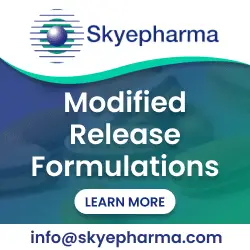
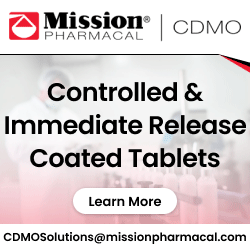
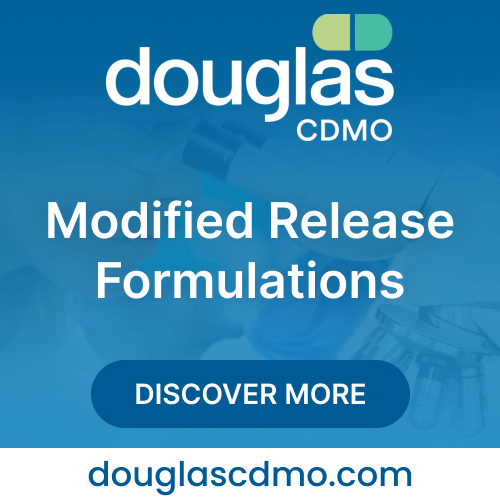
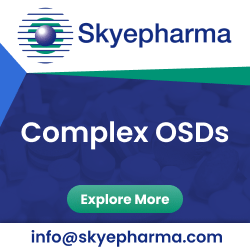
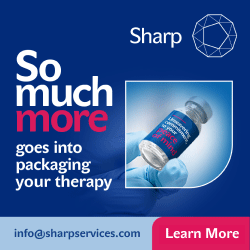





 Skyepharma, an Expert and Innovative CDMO Partner for tailor-made solutions in complex oral solids and bioproduction.
Skyepharma, an Expert and Innovative CDMO Partner for tailor-made solutions in complex oral solids and bioproduction.

















